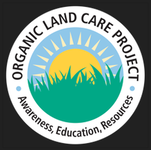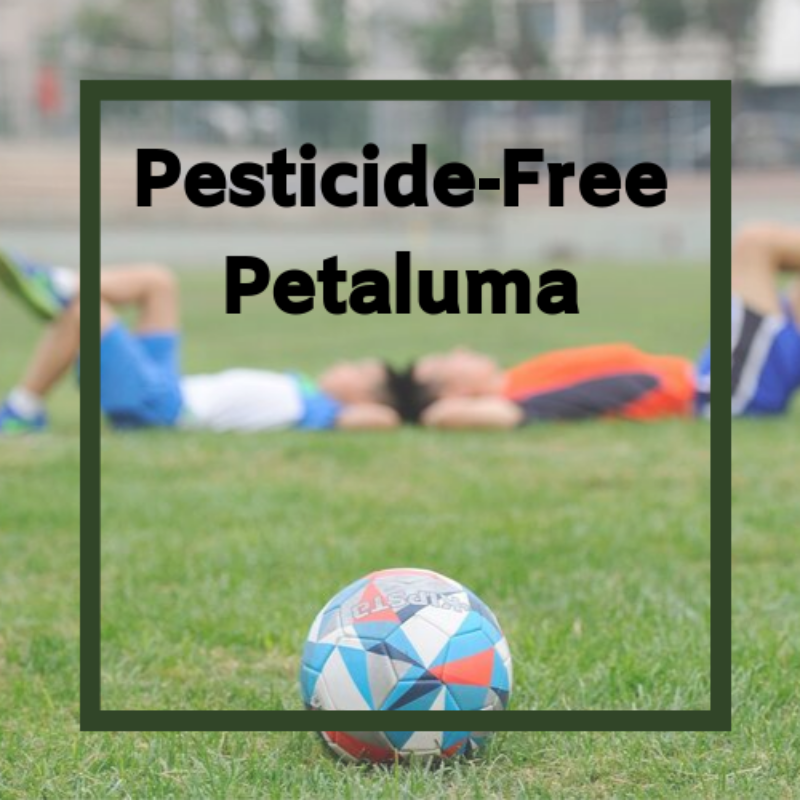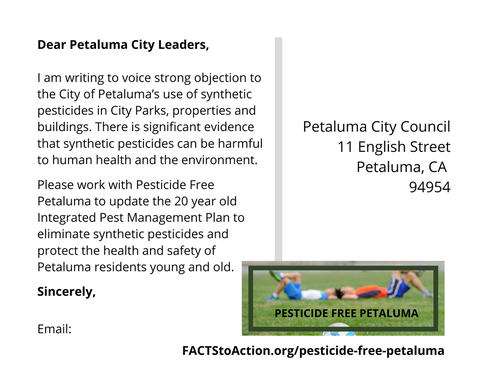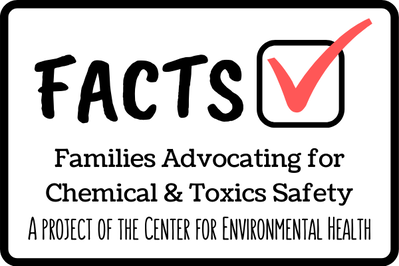Pesticide-Free Petaluma
|
WHAT PESTICIDE-FREE PETALUMA WANTS
Pesticide-Free Petaluma is a community group put together by caring citizens to share information regarding Petaluma, CA’s use of synthetic pesticides and herbicides. We believe in organic pest management, pollinator-friendly spaces, environmentally safe maintenance, and healthy public spaces for all.
Send us an email to sign up for our mailing list. Stay informed of upcoming City Meetings where we need your support; and for information regarding safer alternatives to use for weed and pest abatement in your home! The Press Democrat ran an editorial on September 2, 2018 "Close to Home: Back to School Pesticides Concerns" . It gives some background on the timeline and effort of this movement in Sonoma County.
|
Toolkit: Getting Toxic Pesticides Out of Schools
|
| ||
This Toolkit was developed to help you make sure your child is safe from harmful chemicals while at school. Children are more vulnerable to the negative impacts of pesticides than the rest of the population. Your child’s school should be a responsible and active partner with you and the community to make sure their health and well-being are a priority.
The recently updated California Healthy Schools Act and new California Department of Pesticide Regulation (CDPR) rules regarding Pesticide Use Near Schoolsites provide schools and families with more rights than ever to enact policies that keep pesticides and pesticide drift away from children. This Toolkit will help ensure that your school is following the California Healthy Schools Act (HSA) regulations and following the guidelines of Integrated Pest Management (IPM) that require using the least toxic methods first with a goal of getting to zero pesticide use.
The HSA, passed in 2000, provides legislation for how schools should use and document all pesticide use. Requirements include:
Step 1 - Research Current Practices at Your School and District
A records request is the best way to get recorded information on the pesticide use at your school and district. This can be done by emailing the Superintendent and the following: Principal, Office Manager, Assistant/Secretary, Facility Maintenance.
Dear Superintendent __________,
Under the California Public Records Act §6250 et seq. and the California Healthy Schools Act (AB 2260), I am requesting copies of public records of applications of all pesticides used on and around ______ School District campuses from _____ through ______. Please include the pesticide (herbicide, insecticide, etc.) name, specific street address, and amounts applied by your employees and contractors (e.g. independent pest control companies).
In accordance with the CHSA Education Code §17611, I am also requesting a copy of your school district's Integrated Pest Management (IPM) plan. I request the data be sent to me in .txt, .csv or .xls formats. If these formats are not available, I request the records be scanned and emailed in .pdf format.
I request a fee waiver in that the disclosure of the requested records is in the public interest. I request the records as part of a study on pesticide use in _____ County. I have no commercial interest in the requested information.
I would request a prompt response to this request. If you expect a significant delay in responding to or in fulfilling this request, please contact me with information about when I might expect copies of the requested records.
STEP 2 - Collect, Compile, and Analyze the Data
Determine what your school’s current practices are around pesticide and herbicide use
STEP 3 - Review Legal Compliance
Pre-school and public K-12 schools must be in compliance with the California Healthy Schools Act.
Materials to familiarize yourself with to help schools maintain compliance:
STEP 4 - Gather Examples to Help Spread Your Message
Now that you have gathered and reviewed information on your school’s current use of pesticides, IPM status, and legal compliance, you can get ready to spread the word.
STEP 5 - Organize and Spread the word
Spreading the word and building supportive momentum are critical to build change. You need your District’s Administration and School Board Officials to recognize how important this issue is to their community Here are the areas to start:
The recently updated California Healthy Schools Act and new California Department of Pesticide Regulation (CDPR) rules regarding Pesticide Use Near Schoolsites provide schools and families with more rights than ever to enact policies that keep pesticides and pesticide drift away from children. This Toolkit will help ensure that your school is following the California Healthy Schools Act (HSA) regulations and following the guidelines of Integrated Pest Management (IPM) that require using the least toxic methods first with a goal of getting to zero pesticide use.
The HSA, passed in 2000, provides legislation for how schools should use and document all pesticide use. Requirements include:
- Hiring an IPM Coordinator.
- Proper training and documentation of the use of all pesticides, including disinfectant sprays, aerosols, and wipes.
- Pesticide warning signs that must be posted 24 hours in advance of use and 72 hours after a pesticide application occurs.
- Annual written notifications of all pesticides expected to be used throughout the school year, with an opportunity for families to register to receive advance notifications for individual pesticide applications AT LEAST 72 hours prior to each application. This includes disinfectants and other cleaning agents labeled as pesticides by the EPA.
Step 1 - Research Current Practices at Your School and District
A records request is the best way to get recorded information on the pesticide use at your school and district. This can be done by emailing the Superintendent and the following: Principal, Office Manager, Assistant/Secretary, Facility Maintenance.
- In your request, ask for the records over the last 3 years AND the district's Integrated Pest Management (IPM) Plan. School districts are required to document the use of EPA registered pesticides, and these files are available to the public.
- Sample records request:
Dear Superintendent __________,
Under the California Public Records Act §6250 et seq. and the California Healthy Schools Act (AB 2260), I am requesting copies of public records of applications of all pesticides used on and around ______ School District campuses from _____ through ______. Please include the pesticide (herbicide, insecticide, etc.) name, specific street address, and amounts applied by your employees and contractors (e.g. independent pest control companies).
In accordance with the CHSA Education Code §17611, I am also requesting a copy of your school district's Integrated Pest Management (IPM) plan. I request the data be sent to me in .txt, .csv or .xls formats. If these formats are not available, I request the records be scanned and emailed in .pdf format.
I request a fee waiver in that the disclosure of the requested records is in the public interest. I request the records as part of a study on pesticide use in _____ County. I have no commercial interest in the requested information.
I would request a prompt response to this request. If you expect a significant delay in responding to or in fulfilling this request, please contact me with information about when I might expect copies of the requested records.
STEP 2 - Collect, Compile, and Analyze the Data
Determine what your school’s current practices are around pesticide and herbicide use
- What do they spray?
- Where are they spraying?
- When and how much do they spray?
- Does their IPM plan go into detail about long term prevention, and using least-toxic pesticides only as a last resort?
- Are they posting signs (bilingual is necessary) within the time frame of 24 hours before and 72 hours after a pesticide application is conducted?
STEP 3 - Review Legal Compliance
Pre-school and public K-12 schools must be in compliance with the California Healthy Schools Act.
- Schools must notify families at the beginning of the school year about any pesticides that might be used on campus by school staff or by pest control contractors.
- Were you notified in a parent/student handbook or other material?
- If not, contact the Principal for the required form to sign up.
- Schools must provide a registry to allow parents to OPT IN to receive notifications 72 hours before pesticides are applied on campus (even if application or spray occurs over breaks and weekends).
- Are you signed up for this registry?
- If not, contact the Principal immediately to make the registry available.
- Have you been receiving notifications from the district/school prior to any pesticide use?
- If not, follow up with the Principal and Maintenance Staff to find out if any pesticides have in fact been used in the past year.
- Are you signed up for this registry?
- All school personnel must take training from the CA Department of Pesticide Regulation if they use any pesticides on campus registered by the EPA. This includes any disinfectant cleaning material, spray bottle, aerosol, or wipes.
- What training have Maintenance staff had? Are teachers trained in disinfectants?
- Follow up with the Principal and Maintenance Staff to make sure all applications have ceased until they review with you what training has been completed.
- What training have Maintenance staff had? Are teachers trained in disinfectants?
Materials to familiarize yourself with to help schools maintain compliance:
- CA Department of Pesticide Regulation: School & Child Care Integrated Pest Management (IPM) main website
- CA Healthy Schools Act Compliance Packet
- CA Healthy Schools Act Requirements and FAQs
STEP 4 - Gather Examples to Help Spread Your Message
Now that you have gathered and reviewed information on your school’s current use of pesticides, IPM status, and legal compliance, you can get ready to spread the word.
- Gather case studies and data to show examples of where school districts have already eliminated pesticides successfully, as well as helpful handouts to make the transition a smooth success for your school.
- Beyond Pesticides School template - A model policy for school districts seeking to protect children and school employees from pesticides.
- Healthy Schools Act template - When completed, this template meets the Healthy Schools Act requirement for an integrated pest management (IPM) plan.
- Sample IPM Procedures - IUSD’s (Irvine Unified School District) maintenance program only uses organic products on all school playing fields to prevent exposure to toxins and provide safer school playing spaces.
- Sample School Policy - PCSD’s (Petaluma City School District) IPM policy and IPM committee designation.
- Non Toxic Neighborhoods 2019 Preferred Product List
STEP 5 - Organize and Spread the word
Spreading the word and building supportive momentum are critical to build change. You need your District’s Administration and School Board Officials to recognize how important this issue is to their community Here are the areas to start:
- Engage parents and guardians. Host a meeting or gathering to discuss this issue and build enthusiasm for a toxic-free school. Start with friends and class parents, and then expand to other experts and City leaders (doctors, business owners, etc.). Contact local groups that may be interested, like environmental organizations, and community groups.
- Meet with your local PTA group. Attend a PTA meeting to garner support from the local association. California State PTA recommends that all PTAs take an active role in eliminating pesticide use at schools.
- Meet with the Principal and School Board members privately. Meet with school leaders to let them know your concerns. You want to make sure leaders understand you want to work WITH them to make positive changes in the school for the health of your children and the environment. Encourage their endorsement.
- Attend a School Board Meeting with a Clear Ask to Elected Officials. Be direct with your elected School Board that they need to vote to implement an IPM plan that does not allow the use of synthetic pesticides. Have a few enthused parents speak out with pre-written statements. The School Board may need to agendize the issue to discuss before a vote, if they do, turn out as many supporters as possible!
- Ask for help to spread the word for the School Board meeting: Have kids and adults make homemade signs, wear the same color shirt, create an event on social media, and hand out flyers.
- Be a role model. Get synthetic pesticides out of your yard and help encourage others to do the same!
Beyond Synthetics: A systems approach to natural turf/landscapes
Do you have questions about organic landscaping? Are you a professional facing pressure to stop the use of synthetic fertilizers, and pesticides like glyphosate, 2,4-D and neonicotinoids? Do you want to be able to offer organic services but don't know where to start? Our panelists present their successes and solutions that take us beyond the synthetic paradigm to a new way of viewing landscapes as a biological system to nurture and support.

Chip Osborne, nationally renowned organic expert:
Organic Landscape Association founder, and Beyond Pesticides board member Chip Osborne has over 45 years experience as a professional horticulturist. For over two decades, he has been creating safe, sustainable and healthy athletic fields and landscapes through Natural Turf Management protocols. Learn more about Chip Osborne.
Hosted by the Organic Land Care Project - Visit their website for more information
Organic Landscape Association founder, and Beyond Pesticides board member Chip Osborne has over 45 years experience as a professional horticulturist. For over two decades, he has been creating safe, sustainable and healthy athletic fields and landscapes through Natural Turf Management protocols. Learn more about Chip Osborne.
Hosted by the Organic Land Care Project - Visit their website for more information
Postcard for Petaluma City Council Members
Below are files for you to either print for handouts or mailing to the Petaluma City Council as well as a document you can edit and email to the Petaluma City Council at [email protected]
| |||||




